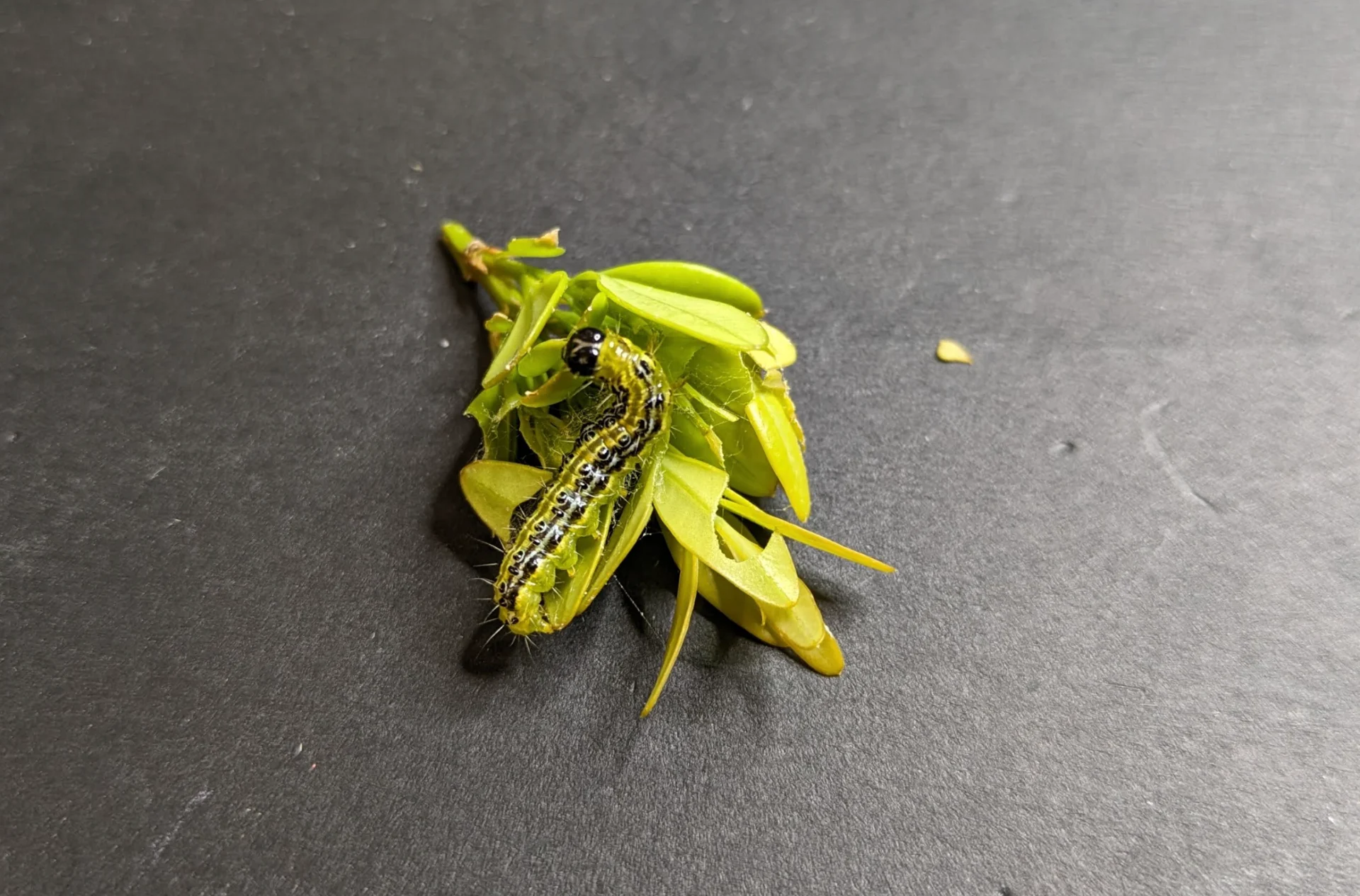
Invasive moth killing boxwood shrubs across Canada
Its extreme eating habits are responsible for wreaking havoc on boxwood plants in at least five provinces
Boxwood has been a fan favourite of landscape and garden enthusiasts for decades. It is hearty, stays green all year, can be shaped in topiary or used as hedging. And it turns out it is also a food favourite of a newer pest that is in the process of decimating the plant across multiple provinces. We spoke with Landscape Ontario to find out what you need to know about the box tree moth and how to save your shrubs.
“Boxwoods are amazing plants. They can survive sun and shade; you can shape them into whatever you want; they last for decades; you just can't replace them. We’ve tried other plants, and the boxwood really is special. We’re doing everything we can to make sure their run in Canada is not over yet," says Dr. Jeanine West, from Landscape Ontario, in an interview with The Weather Network.
However, chances are if you are in central or eastern Canada and have this well-known green shrub in your garden, it may be looking a little worse for wear. And this time, it has nothing to do with your green thumb. The culprit: this green and black caterpillar and its white and brown adult moth counterpart, the box tree caterpillar or moth. It and its extreme eating habits are responsible for the havoc that is being wreaked on the boxwood in at least five provinces. We breakdown this new invasive species that is spreading across the country, hitching a ride in your boxwood plants.
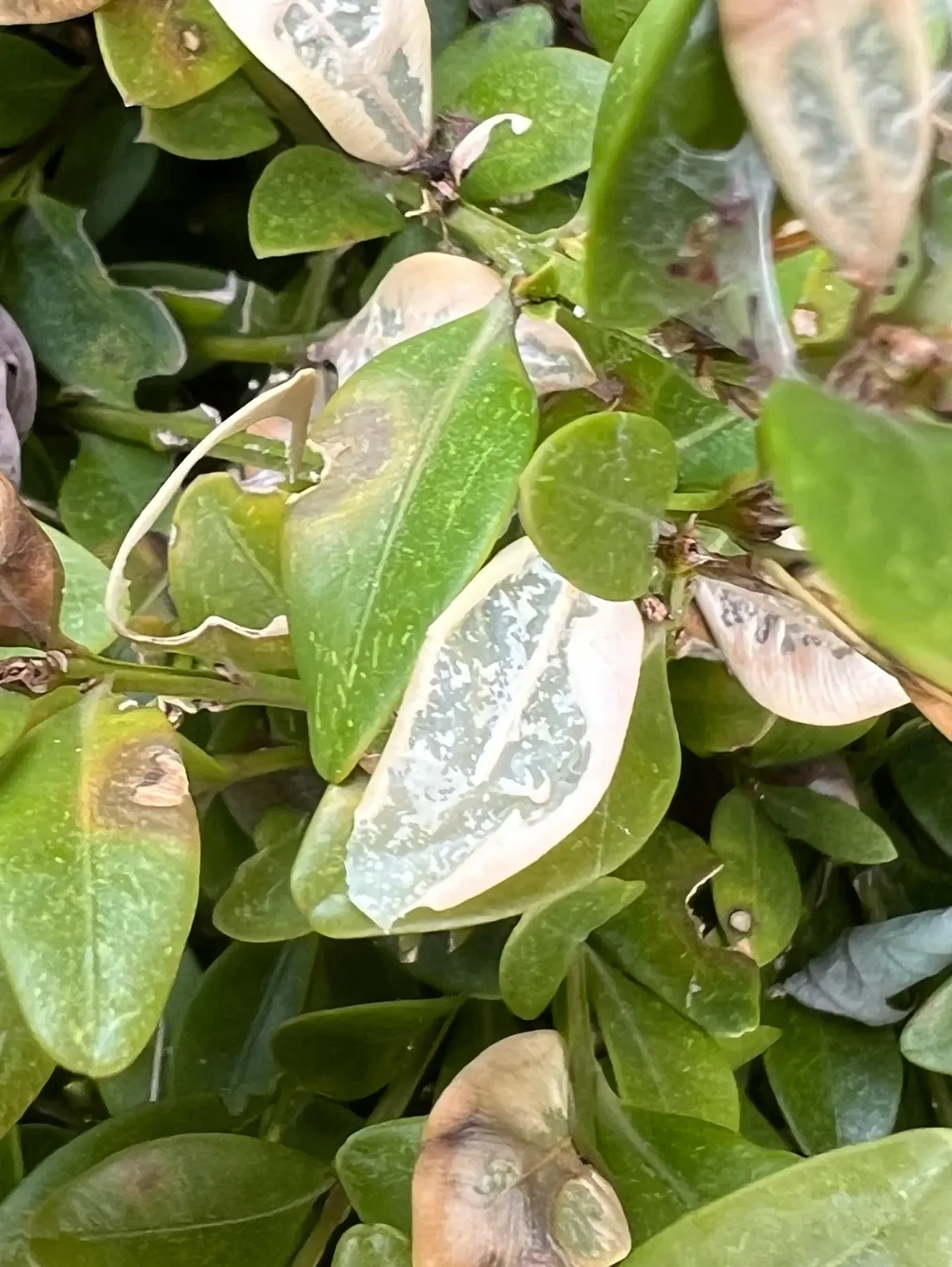
According to the Canadian Food Inspection Agency, younger larvae feed by eating the lower surfaces of the leaves only, leaving the upper epidermis intact. (Photo courtesy of Landscape Ontario/provided)
The First Sighting and Subsequent Spread
The box tree moth was first spotted in Toronto in 2018.
“We aren’t sure how it got here. This was the first sighting in North America,” adds West.
Boxwood is native to Asia, as is the box tree moth. This new pest won’t hurt you or any other plants in your garden. Unfortunately, the only thing it wants to eat is its home-town food, the boxwood, and it has a voracious appetite.
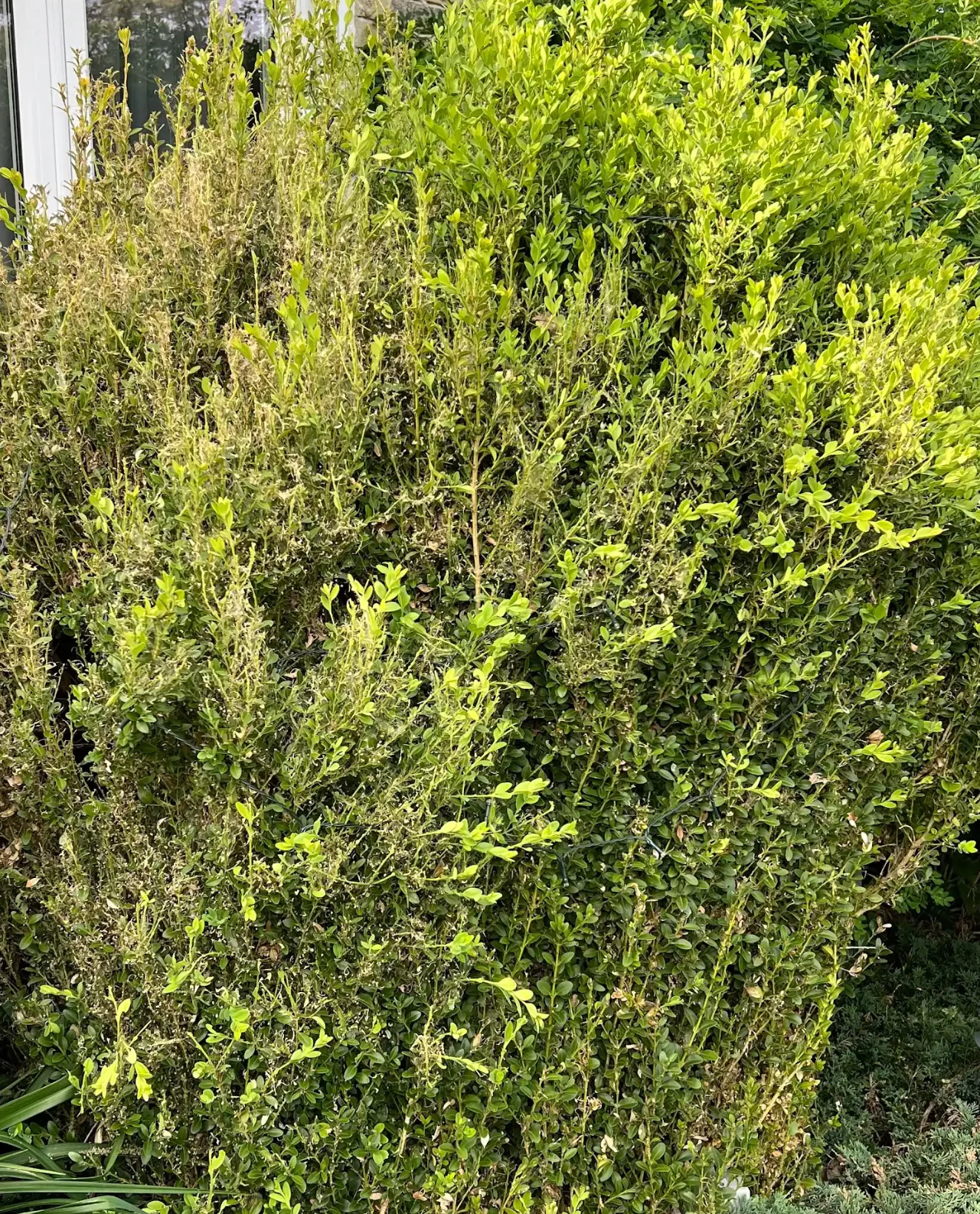
Badly damaged mature boxwood (Landscape Ontario/provided)
Since it was first spotted, grower groups, landscape organizations like Landscape Ontario, the Canadian government, and teams of entomologists (bug experts) have attempted eradication and implemented best management practices, but the pest has continued to spread.
Ontario is now considered infested by the box tree moth, especially in parts of southern Ontario. This invasive species has now spread further east, to Quebec, Nova Scotia, New Brunswick, and Newfoundland. It’s likely that the spread will continue to grow within infested areas.
The Canadian Government even released a warning about the box tree moth this year. If you spot one in any other province or territory, you are being asked to get in touch with the Canadian Food Inspection Agency, here. Now, officials are focussed on preventing spread to western Canada.
West continues, “It won't spread to colder parts of the Prairies or Northern Canada where boxwood wouldn’t be found. We know it’s not in British Columbia, and it would be devastating to their landscape if it were found there. Make sure you don’t buy plants in one area and take them out of the region, like to your cottage in a different area, especially if it’s a boxwood plant.”
Life Cycle
The box tree moth can spend winter tucked away inside your shrubs as a caterpillar and become more active in spring. And, when it matures into an adult, it will then lay eggs that hatch into the green and black larvae you may subsequently find hiding in your familiar foliage. This little caterpillar is capable of consuming much of your boxwood plant. Look for frayed and eaten leaves, webbing, and little balls of excrement as the most common signs of damage.
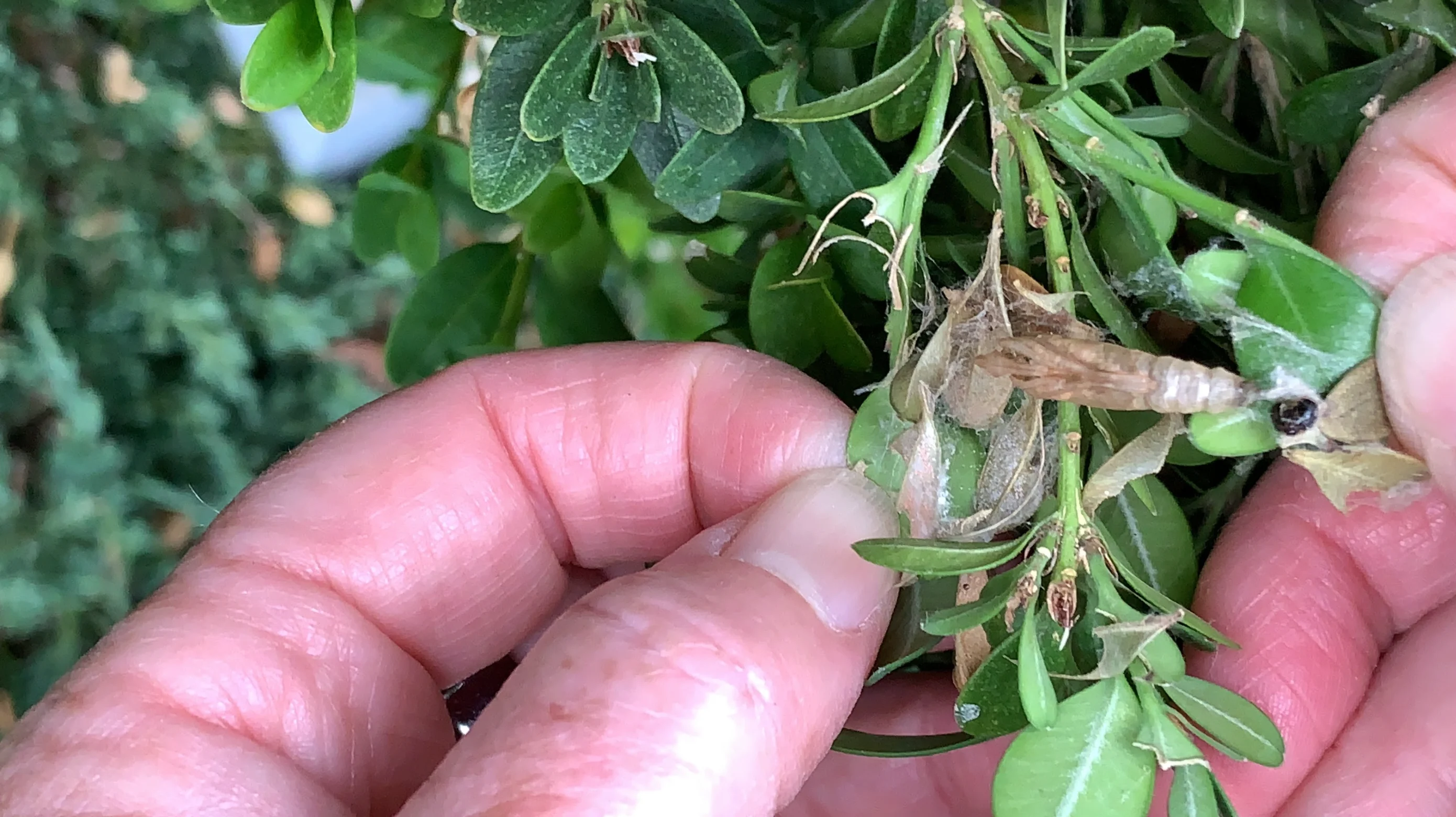
Frass and webbing (Landscape Ontario/The Weather Network)
“The adult moth can fly anywhere from 5 to 10 kilometres in a single season and will lay eggs and continue the cycle on other boxwood plants. You can imagine how fast it spreads around neighbourhoods within a season,” West said.
Save Your Shrub
Damaged plants can appear brown, shaggy, and dead-looking. But West says not to be so quick to rip out these plants. Even if there’s only a tiny bit of green left in a boxwood, it can still be saved. However, it’s not a quick fix. A bacterial spray known as BTK (Bacillus thuringiensis Kurstaki) can be found at any garden centre and will kill the caterpillar once it eats leaves that have been sprayed, but you will need to keep on top of the many applications. West recommends applying the spray mixture during the evening hours, as the sun damage the beneficial bacteria mid-day. Also, spray about six inches into the foliage to make sure there is good coverage, and reapply every one to two weeks or after a heavy rain.
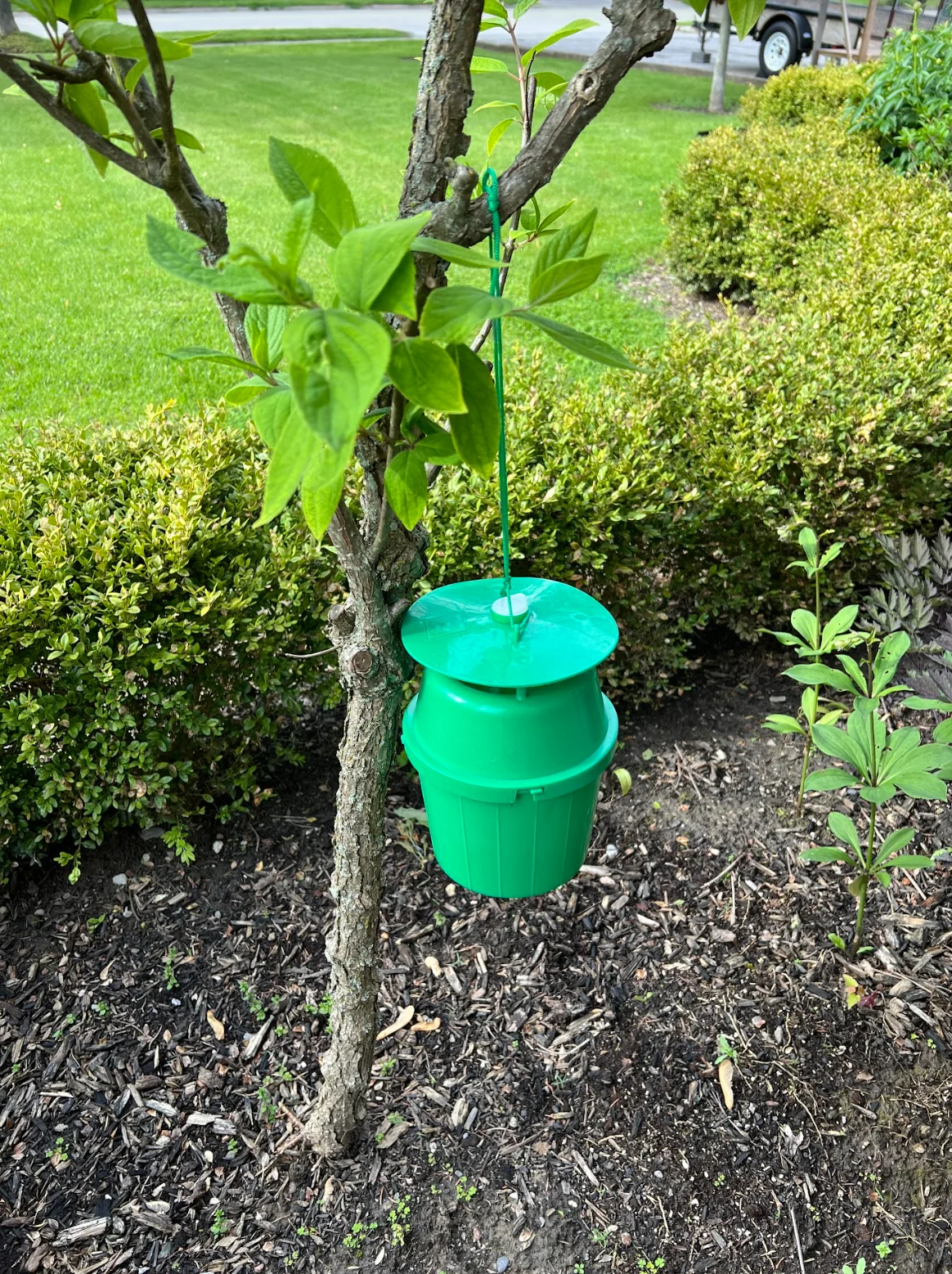
UniTrap to attract box tree moth (Landscape Ontario/provided)
She continues, “Spray just to the point where the leaves are wet; you don’t have to have them dripping, and it’s also important to continue spraying throughout the summer months to catch the two to three life cycles of this box tree moth.”
Setting out traps with a box tree moth lure can also help signal when the adults are flying, helping you to pinpoint times when eggs would be laid.
The Future of the Boxwood Market in Canada
“It was a really big market before the [box tree moth] came on the scene.” West tells us.
Attempting to curb the box tree moth and create management strategies is a large part of her day-to-day role as she liaises with the Canadian government, growers, entomologists, and other landscape organizations.
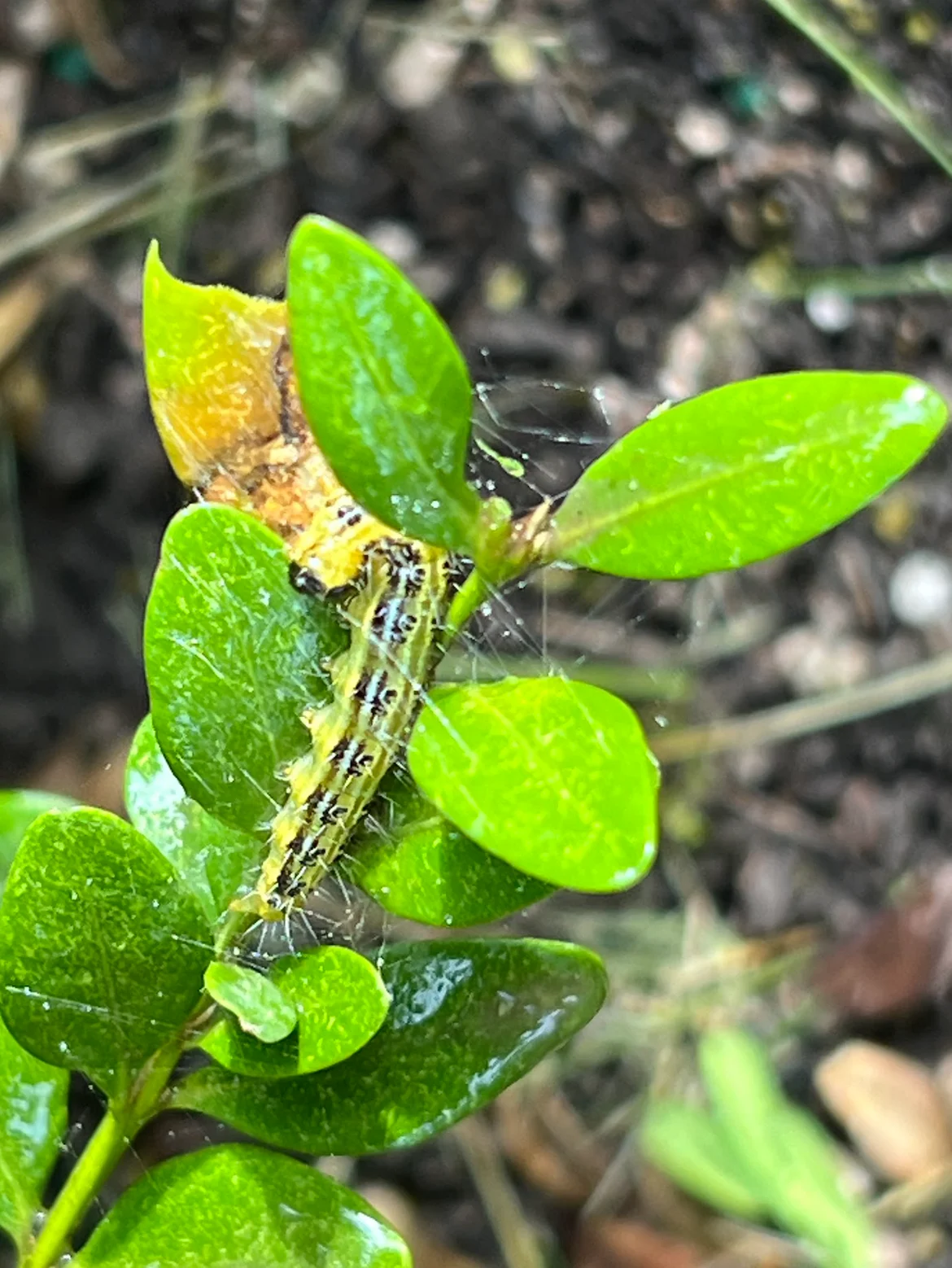
Mature larva getting ready to pupate (Landscape Ontario/provided)
As far as nursery growers in Canada are concerned, the box tree moth has already been devastating. Boxwood export is a multi-million dollar industry and is now completely shut down for Ontario growers, especially for nursery buyers stateside. Garden and landscape officials are trying to put pheromone traps and lures in place for tracking the adult moth and continue education efforts for the general public, as this invasive species could be with us for the long haul. However, West says not to lose hope.
“There's no real good replacement for boxwood; it’s an ideal specimen; don’t give up on it. If there’s even a tiny bit of green left in some leaves, there’s a good chance it will bounce back. But it will require some management. Stay on top of it, spray it, give it some fertilizer and some TLC, and it should recover,” says West.
